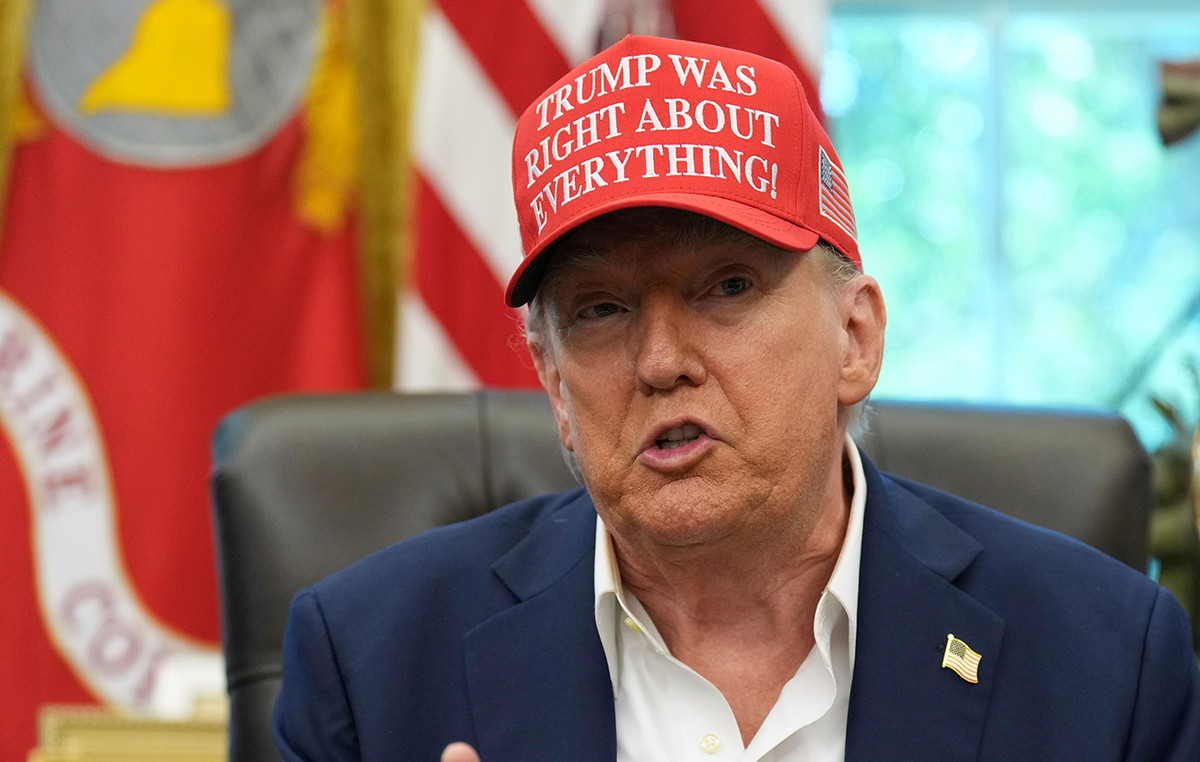- The Dollar Index is trading at 104.6, posting slight losses in Tuesday's trading.
- The Dollar is trading sideways, as the Fed is cautious and reluctant to prematurely ease.
- The chances of a cut in September decrease slightly, but remain high.
The US Dollar Index (DXY) stood at 104.60 on Tuesday with slight losses. Amid signs of strong growth and persistent inflation in the US, Federal Reserve (Fed) officials continue to express caution about premature easing.
Market attention is steadily shifting to the upcoming release of the Federal Open Market Committee (FOMC) Minutes on Wednesday and mid-level data on Thursday and Friday, including S&P PMIs and Durable Goods Orders.
Daily Market Moves Summary: DXY Down Slightly as Markets Await FOMC Minutes
- Fed officials express concern about rushing into easing amid loose financial conditions and continually advocate for a cautious approach to rate cuts.
- Market forecasts currently point to a 75% chance that the Fed will lower rates at its September meeting, a probability that has been reduced slightly after being discounted last week.
- Any new clues on the May FOMC meeting minutes or the outcome of the S&P Global May PMIs or April Durable Goods Orders could lead to volatility in the USD dynamics.
DXY Technical Analysis: Balance between bulls and bears on DXY persists as investors wait for direction
The indicators on the daily chart reflect a state of equilibrium for the US Dollar Index. The RSI remains flat, indicating that there is no clear predominance between the buying and selling impulse. However, it remains in negative territory, which could suggest a general, but not decided, bearish trend. The Moving Average Convergence Divergence (MACD) shows flat red bars, hinting that the bearish sentiment remains strong.
Despite increasing selling pressure pushing the pair below the 20-day SMA, it continues to hold above the 100-day and 200-day SMA. Although the market appears to be waiting for direction, the index's ability to hold above the 100- and 200-day SMAs shows persistent demand whenever the DXY falls, highlighting a more bullish outlook.
US Dollar FAQ
What is the US Dollar?
The United States Dollar (USD) is the official currency of the United States of America, and the “de facto” currency of a significant number of other countries where it is in circulation alongside local banknotes. According to 2022 data, it is the most traded currency in the world, with more than 88% of all global currency exchange operations, equivalent to an average of $6.6 trillion in daily transactions.
After World War II, the USD took over from the pound sterling as the world's reserve currency.
How do the decisions of the Federal Reserve affect the Dollar?
The single most important factor influencing the value of the US Dollar is monetary policy, which is determined by the Federal Reserve (Fed). The Fed has two mandates: achieve price stability (control inflation) and promote full employment. Your main tool to achieve these two objectives is to adjust interest rates.
When prices rise too quickly and inflation exceeds the 2% target set by the Fed, the Fed raises rates, which favors the price of the dollar. When Inflation falls below 2% or the unemployment rate is too high, the Fed can lower interest rates, which weighs on the Dollar.
What is Quantitative Easing and how does it influence the Dollar?
In extreme situations, the Federal Reserve can also print more dollars and enact quantitative easing (QE). QE is the process by which the Fed substantially increases the flow of credit into a clogged financial system. This is an unconventional policy measure used when credit has dried up because banks do not lend to each other (for fear of counterparty default). It is a last resort when a simple lowering of interest rates is unlikely to achieve the necessary result. It was the Fed's weapon of choice to combat the credit crunch that occurred during the Great Financial Crisis of 2008. It involves the Fed printing more dollars and using them to buy US government bonds, primarily from financial institutions. QE usually leads to a weakening of the US Dollar.
What is quantitative tightening and how does it influence the US dollar?
Quantitative tightening (QT) is the reverse process by which the Federal Reserve stops purchasing bonds from financial institutions and does not reinvest the principal of maturing portfolio securities in new purchases. It is usually positive for the US dollar.
Source: Fx Street
I am Joshua Winder, a senior-level journalist and editor at World Stock Market. I specialize in covering news related to the stock market and economic trends. With more than 8 years of experience in this field, I have become an expert in financial reporting.







